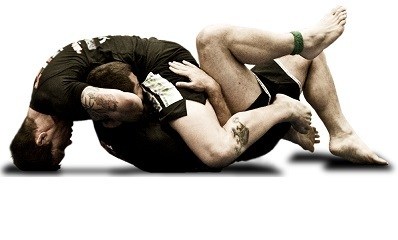Welcome to the ultimate guide to Mixed Martial Arts (MMA), where we dive into the exciting world of combat sports and explore the dynamic blend of martial arts disciplines. In this comprehensive guide, we will unravel the mysteries surrounding Mixed Martial Arts, including its origins, rules, weight classes, and future prospects. So, gear up and get ready to embark on a thrilling journey through the realm of MMA!
What is MMA? The Art of Blending Martial Arts Disciplines
At its core, Mixed Martial Arts is a captivating combat sport that incorporates techniques and principles from various martial arts styles. By seamlessly blending striking, grappling, and ground fighting, fighters have an arsenal of techniques at their disposal, making it a truly versatile and formidable discipline.
Whether it's the precise punches of boxing, the strategic takedowns of wrestling, the crafty submissions of Brazilian Jiu-Jitsu (BJJ), the explosive kicks of karate, the devastating strikes of Muay Thai, or the tactical prowess of Sambo, it encompasses the best of multiple combat disciplines.
The Astonishing Benefits: Unleashing Your Potential
Training in this discipline offers a multitude of physical, mental, and emotional benefits that can transform your life. From a physical standpoint, MMA training improves overall fitness, cardiovascular endurance, muscular strength, and agility. As you progress in your training, you'll notice enhanced coordination, reflexes, and flexibility, which are essential in executing precise techniques.
Training also nurtures mental fortitude, discipline, and focus. The rigorous training routines and the challenges faced inside the octagon build mental resilience, preparing you to overcome obstacles not only in training but also in other areas of life. Furthermore, fosters self-confidence, self-defense skills, and a sense of empowerment, making it an empowering pursuit for individuals of all backgrounds.
The Fascinating Journey: From Its Origins to Modern-day Glory
To understand the roots of Mixed Martial Arts, we must take a step back in time to ancient civilizations, where various forms of combat sports existed. These early forms of fighting, often without rules or limitations, laid the foundation for what would eventually become MMA. Examples include the pankration of ancient Greece, the gladiatorial contests of ancient Rome, and various other regional fighting traditions.
Pioneers Who Shaped MMA: Visionaries of a Groundbreaking Sport
Throughout history, several influential figures played pivotal roles in shaping the combat art into the regulated sport we know today. These pioneers, with their innovative approaches, contributions to rules, and revolutionary training methods, propelled the sport to new heights. Notable figures include Helio Gracie, Bruce Lee, Gene LeBell, and many more, who each left an indelible mark on the development and growth of fighting arts.
Evolution of Modern: Revolutionizing Combat Sports
From its early days as a no-holds-barred spectacle to its current form as a highly regulated and respected sport, it has undergone a remarkable transformation. Today, organizations like the Ultimate Fighting Championship (UFC) have elevated it to a global phenomenon, captivating audiences worldwide.
With stringent rules, weight classes, and a focus on athlete safety, modern MMA showcases the technical skills and athleticism of the fighters while providing an unparalleled viewing experience for fans.
Unveiling the Dynamic Styles: The Perfect Fusion of Martial Arts
One of the most fascinating aspects of it is the integration of various martial arts styles. Let's take a closer look at the key styles that contribute to the diverse skill set of fighters:
Boxing: The Sweet Science of Striking and Defense
Boxing plays a crucial role in the stand-up aspect of the sport. Boxers possess exceptional hand speed, precision, and footwork, allowing them to unleash powerful punches while evading their opponents' attacks.
The ability to effectively utilize punches and combinations, along with defensive techniques such as slips, blocks, and head movement, makes boxers formidable competitors inside the cage. Notable examples of MMA fighters with a boxing background include Anderson Silva and Conor McGregor.
Wrestling: Mastering the Art of Takedowns and Ground Control
Wrestling forms the foundation of many successful fighters' skill sets. Wrestlers excel in the art of takedowns, using their exceptional strength and technique to bring opponents to the ground.
Once on the mat, wrestlers leverage their control and ground positioning to neutralize opponents and dictate the flow of the fight. Notable fighters with a wrestling background include Kamaru Usman and Daniel Cormier.
Brazilian Jiu-Jitsu (BJJ): The Art of Submissions and Ground Fighting
Brazilian Jiu-Jitsu (BJJ) has revolutionized the ground fighting aspect of the game. With its emphasis on submissions, joint locks, and chokeholds, BJJ allows fighters to neutralize opponents and force them into submission, even from disadvantaged positions.
BJJ practitioners possess a deep understanding of leverage, technique, and body positioning, enabling them to dominate opponents on the ground. Renowned MMA fighters with a BJJ background include Demian Maia and Nate Diaz.
Karate: Unleashing Precision Strikes and Fluid Techniques
Karate, with its focus on striking techniques such as punches, kicks, and knee strikes, adds a dynamic element to MMA. Karate practitioners exhibit exceptional speed, timing, and flexibility, allowing them to deliver precise and devastating strikes.
They often excel in creating distance, utilizing angles, and launching powerful kicks. Lyoto Machida and Stephen Thompson are prominent examples of Mixed Martial Artist with a karate background.
Muay Thai: The Art of Eight Limbs and Devastating Strikes
Muay Thai, also known as the "Art of Eight Limbs," incorporates punches, kicks, knee strikes, and elbow strikes, making it a lethal discipline for combat athletes. Muay Thai practitioners possess incredible power, conditioning, and clinch control, enabling them to deliver devastating strikes from various ranges.
Their ability to generate force through elbows and knees sets them apart in close-quarters combat. Notable fighters with a Muay Thai background include Joanna Jedrzejczyk and Alistair Overeem.
Sambo: Harnessing the Power of Russian Combat Sport
Sambo, a Russian combat sport, combines elements of wrestling, judo, and submission grappling.
Sambo practitioners showcase exceptional grappling skills, emphasizing throws, takedowns, and ground control. With a focus on both standing and ground techniques, Sambo fighters display versatility and adaptability in the cage. Fedor Emelianenko and Khabib Nurmagomedov are renowned fighters with a Sambo background.
Decoding the Rulebook: Understanding the Key Regulations
To ensure safety and fairness, the sport operates under a set of rules and regulations. While specific rules may vary between organizations, some common guidelines include the prohibition of eye gouging, strikes to the back of the head, and biting.
Fighters must adhere to weight classes to ensure balanced competition, and rounds are typically timed. Understanding and abiding by these rules are essential for fighters and fans alike.
Finding Your Weight Class: The Path to Fair Competition
MMA incorporates a system of weight classes to ensure fair and competitive matchups. Fighters are categorized into specific weight ranges, allowing them to compete against opponents of similar size and physicality.
By competing within their respective weight classes, fighters can showcase their skills and techniques on a level playing field.
Similar to boxing, MMA employs weight classes to ensure fair competition. Fighters are categorized into specific weight ranges, such as flyweight, bantamweight, featherweight, lightweight, welterweight, middleweight, light heavyweight, and heavyweight.
Each weight class has its own upper limit to prevent significant mismatches in size and strength. In addition, each weight class has its own unique set of challenges and characteristics, and fighters must carefully manage their weight to compete effectively.
Safety First
To ensure safety and fairness, the sport operates under a set of rules and regulations that govern the conduct of fighters inside the octagon. While specific rules may vary between organizations, there are some common guidelines that apply to most MMA competitions. Understanding these rules is crucial for fighters and fans alike. Let's explore some of the key regulations in MMA:
- Striking Techniques: MMA allows a wide range of striking techniques, including punches, kicks, knees, and elbows. Unlike in boxing, where only punches are allowed, fighters have the freedom to utilize various strikes to attack their opponents.
- Grappling and Ground Fighting: MMA incorporates grappling and ground fighting techniques, allowing fighters to engage in clinches, takedowns, and submission holds. This aspect distinguishes MMA from pure boxing, as it introduces a whole new dimension to the sport.
- Round System: MMA fights are typically divided into multiple rounds, each lasting a specific duration. The standard round duration is 5 minutes in most organizations, with a minute of rest between rounds. Championship fights may consist of five rounds, while non-title fights often have three rounds.
- Scoring: Fights are scored by judges based on various factors, including effective striking, grappling, aggression, and octagon control. Judges assess the overall performance of each fighter during the course of the bout and award points accordingly. The fighter who scores higher on the judges' scorecards at the end of the fight is declared the winner.
Foul Play: Unacceptable Actions in the Octagon
In the world of MMA, there are several actions and techniques that are strictly prohibited due to their potential to cause harm or violate the principles of fair play. The following regulations serve to prioritize the safety of the fighters, maintain the integrity of the sport, and ensure a level playing field for all competitors.
- Strikes targeting back of the head and strikes to the throat are prohibited, as they pose significant risks to the safety of the fighters. Additionally, strikes to the groin area are illegal and can result in penalties or disqualification.
- Eye Gouging or intentionally poking an opponent in the eyes with fingers or thumbs, is strictly prohibited. This dangerous and unsportsmanlike technique can cause severe injury and immediate disqualification.
- Biting an opponent is considered a foul. This includes any intentional attempt to bite, regardless of whether or not it causes injury. Biting is not only against the rules but also goes against the principles of fair play and sportsmanship.
- Hair Pulling is considered a foul. The hair is considered part of the body and should not be used as a means of gaining an advantage or causing harm to the opponent.
- Groin Strikes are strictly prohibited. Accidental strikes may occur during the heat of the fight, but intentional strikes to the groin can result in point deductions, penalties, or even disqualification.
- Fingers and Toes in Open Gloves: Fighters in MMA wear open-fingered gloves, which allow for grappling and striking techniques. However, extending the fingers or toes outwards towards the opponent's eyes or sensitive areas is not allowed. This is to prevent eye injuries or damage caused by accidental pokes.
- Illegal Techniques are prohibited due to their high risk of injury. These include headbutts, knee to head when opponent is grounded (one hand on mat), strikes to the spine or back of the head, and strikes to the trachea or windpipe. The intentional use of these techniques can lead to immediate disqualification.
- Unsportsmanlike Conduct, such as excessive taunting, disrespecting the opponent, or any actions that bring the sport into disrepute, are penalized in MMA. This includes actions that incite violence or go against the principles of fair play and respect.
By adhering to these regulations, MMA ensures a level playing field for fighters while prioritizing their safety and well-being. The combination of striking, grappling, and ground fighting sets MMA apart from other combat sports, creating a unique and exciting experience for both participants and spectators.
It's important to note that while MMA shares similarities with boxing, it encompasses a broader range of techniques and strategies. The integration of grappling and ground fighting adds a dynamic element to the sport, requiring fighters to develop well-rounded skills in both striking and grappling disciplines.
Innovation in Training: Unlocking New Frontiers in Preparation
The world of training constantly evolves, with coaches and athletes employing innovative approaches to maximize performance.
From strength and conditioning programs to mental preparation, various training methodologies contribute to success inside the cage. For example, fighters utilize advanced techniques such as high-intensity interval training (HIIT), plyometrics, Olympic weightlifting, and sport-specific drills to enhance their physical attributes.
Additionally, the integration of technology has revolutionized training methods. Athletes now have access to sophisticated tools such as performance tracking devices, virtual reality training simulations, and video analysis software, enabling them to fine-tune their skills and gain a competitive edge.
Prominent trainers and coaches have emerged within the community, guiding fighters to reach their full potential. For example, renowned coaches like Greg Jackson, Firas Zahabi, and Rafael Cordeiro have developed training systems that have produced champions in various MMA organizations. These trainers utilize a combination of technical expertise, strategic planning, and personalized approaches to prepare fighters for the challenges of the octagon.
Shaping the Future: A Glimpse into an Ever-Evolving Sport
The future of MMA holds tremendous potential for growth and development. As the sport continues to captivate audiences worldwide, technological advancements, scientific research, and a deeper understanding of human performance will shape its trajectory. We can anticipate further advancements in training methodologies, nutrition, injury prevention, and fighter safety.
Moreover, the popularity of MMA is transcending boundaries and cultural barriers, with the sport gaining recognition and acceptance on a global scale. As MMA organizations expand their reach and hold events in new markets, the talent pool of fighters continues to grow, promising a bright future for the sport. A good example is, "The Rise of MMA is the UK."
Mixed Martial Arts is an extraordinary combat sport that combines the best elements of various martial arts disciplines. With its rich history, diverse styles, and compelling rules, the sport has evolved into a highly respected and thrilling form of competition.
By understanding the fundamentals of MMA, appreciating the benefits it offers, and exploring the dynamic styles and training approaches, you can embark on a rewarding journey into the world of mixed martial arts. So, whether you aspire to be a fighter, a fan, or simply curious about the sport, embrace the power of MMA and discover the incredible possibilities it holds.
Now, it's time to step into the realm of Mixed Martial Arts and unlock your true potential!

Frequently Asked Questions
What Countries is MMA Banned In?
As of this posting, MMA is still not legal in Norway; pro-boxing is also illegal in Norway. In 1997 in New York, and in most parts of the United States MMA was banned because it was considered too violent and brutal. John McCain lead the charge against MMA because he believed it was "human cockfighting."
Can You Throw Your Opponent Out of the Cage in MMA?
No, in regulated MMA bouts, it is generally not allowed to intentionally throw your opponent out of the cage. MMA promotions typically have rules and regulations in place to ensure fighter safety and fair competition. These rules often include guidelines on the boundaries of the fighting area, such as the cage or ring, and fighters are expected to remain within these boundaries during the bout. Intentionally throwing an opponent out of the cage would likely result in penalties or disqualification for the offending fighter.
Can There Be a 10 - 7 Round in MMA?
Yes, it is possible for a judge to score a round 10-7 in MMA, although it is relatively rare. In the Unified Rules of Mixed Martial Arts, which is widely used as a guideline for MMA competitions, a 10-7 round is described as a round where one fighter has dominated the other fighter to an extreme extent, causing significant damage or achieving multiple near-finishes, such as knockdowns or submission attempts.
The criteria for scoring rounds in MMA include effective striking, grappling, aggression, and octagon control. If a fighter clearly dominates their opponent in multiple areas and inflicts significant damage, it could warrant a 10-7 score for that round. However, judges have different interpretations and scoring can vary, so it's not a common occurrence.




